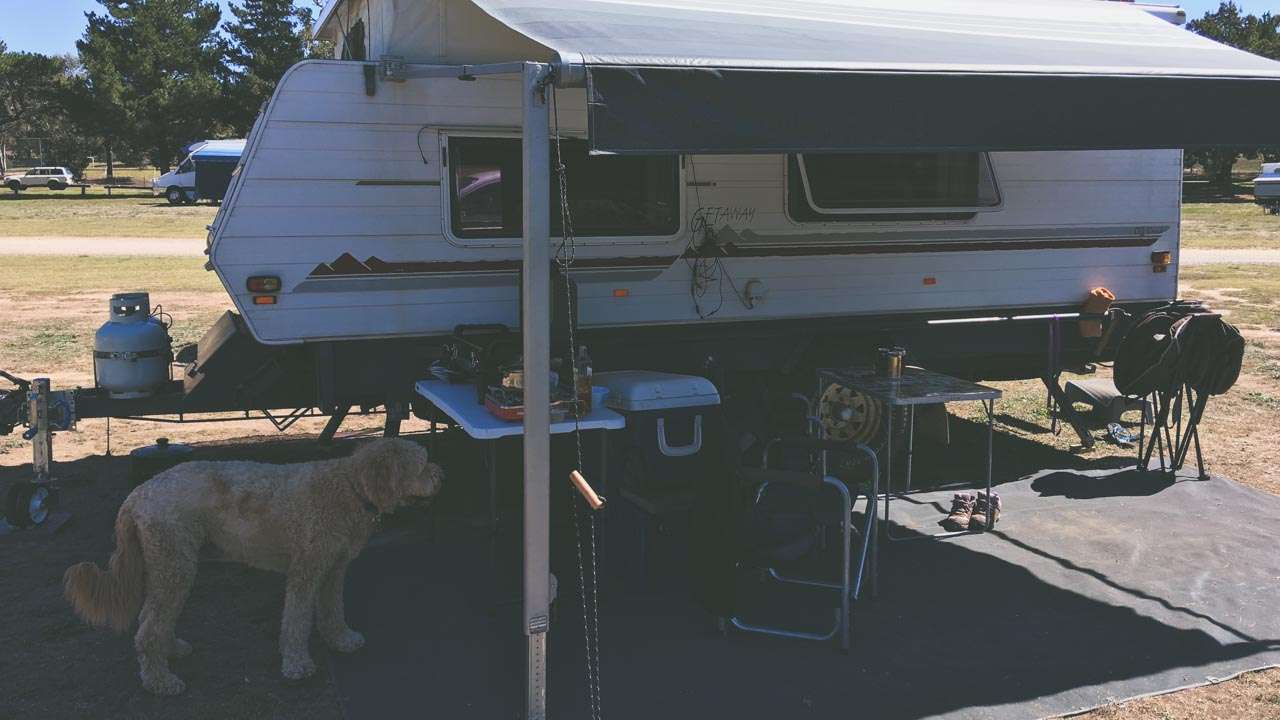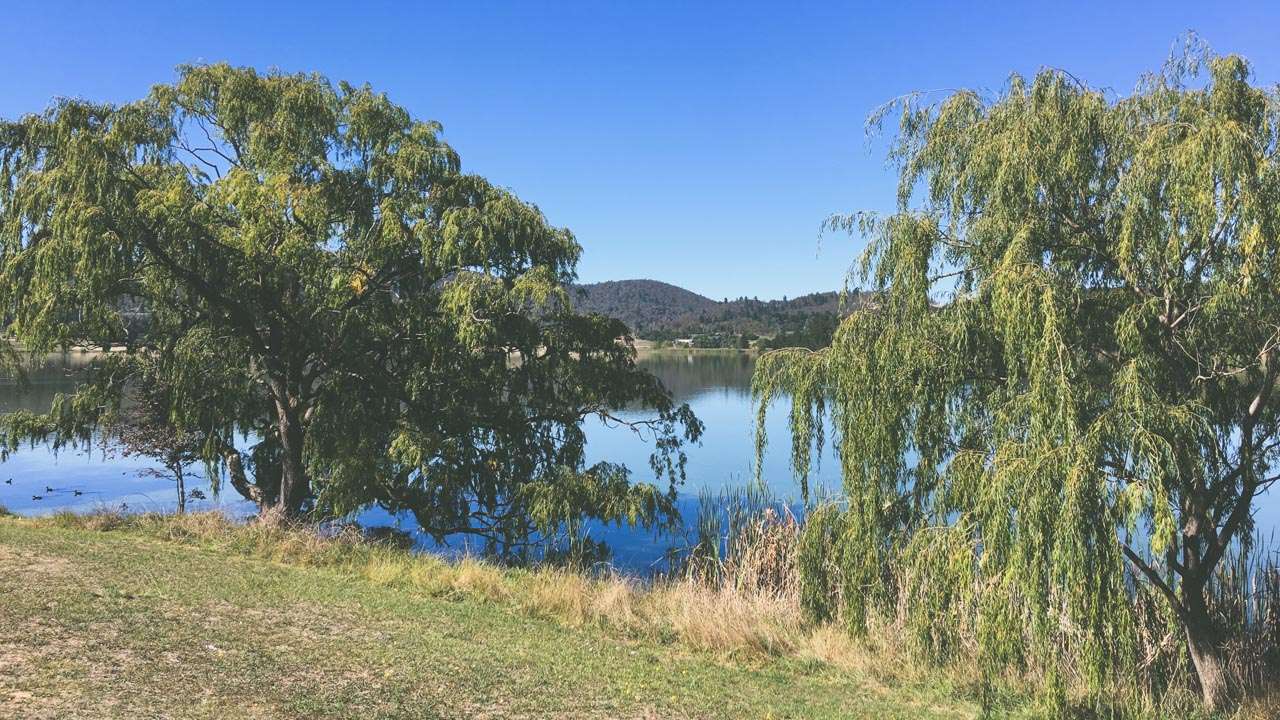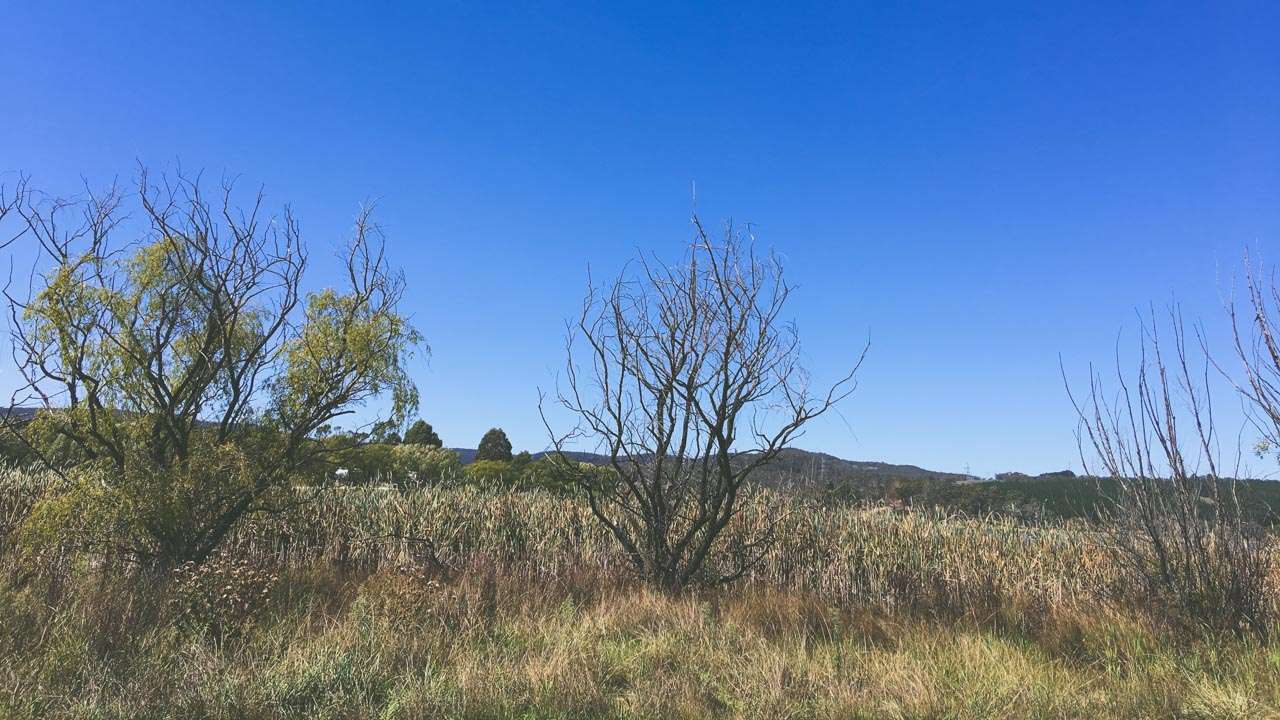Lake Wallace Camping For Free With Full Amenities Near Sydney
Lake Wallace Camping is a perfect spot for RVs and caravans. Free camping with toilets and showers close to Sydney with lots to explore and do. Located only ten minutes west of Lithgow Lake Wallace camping at Wallerawang or “Wang” as the locals lovingly refer to it is an awesome free camping campsite for self-contained recreational vehicles and caravans.
Lake Wallace offers an RV-friendly campsite in an impeccable location to station your RV or caravan for a couple of days. The amenities include an RV dump point, toilets and showers, a playground, barbecue facilities and a designated off-leash dog area. Lake Wallace Camping is just a few minutes over two hours drive from Sydney and is conveniently located only 15 minutes from Lithgow.
Table Of Contents
- Camping is allowed for a maximum of 48 hours, with open fires strictly prohibited. The Wallerawang Town Centre is conveniently situated a ten-minute walk or a brief two-minute drive away, providing options for dining and additional supplies.
- An information bay at the entrance to Lake Wallace outlines suggestions on w wide and varied array of activities and attractions within the Seven Valleys destination.
- For further details on extending your stay or for any other inquiries visit the great friendly staff at the Seven Valleys Visitor Information Centre.
- About Lake Wallace Camping Barton Avenue Wallerawang NSW
- Located just 10 minutes on the Bathurst side of Lithgow, Lake Wallace is designated an RV friendly campground and is the ideal location to set up your RV or Caravan for a couple of days. Facilities include RV Dump point, nearby toilets and hot showers, playground, barbecue facilities and off leash dog area.
- Self-contained RV’s and Caravans with on-board toilet facilities are allowed for a maximum of 48 hours in the designated areas.
- The Lithgow area has an abundance of environmental areas that are a drawcard for visitors. Lake Wallace is an example. During holiday periods, the lake foreshores and water are heavily used. This requires careful management of some of the issues that can arise.
- As of 22 May 2023, open fires will no longer be permitted within the bounds of Lake Wallace. Campfires/naked flames are no longer allowed.
- While open fires are much loved by many campers they can create problems. This includes damage to the open spaces and the need to then remediate the affected areas. Vegetation which supports wildlife can also be damaged when people forage for kindling and firewood. The community has expressed concern that unattended fires impact the safety of other users, and result in negative impacts to the environment and amenity of the site. Signage advising of the changes has been erected to inform all users visiting the site. Please contact Lithgow City Council on 02 6354 9999 should open fires be identified.
- Wallerawang Town Centre is only a ten minute walk or two minute drive for a meal and extra supplies.
- Dogs are permitted on a leash.
Address: Barton Ave, Wallerawang NSW
Type: Free Camping
Cost: Free
GPS: -33.415073°, 150.073976°
Phone: 1300 760 276 or (02) 6352 9130
Email: [email protected]
Web: https://www.visitnsw.com/destinations/blue-mountains/lithgow-area/lithgow/attractions/lake-wallace
Fires: No
Toilets: Yes
Showers: Yes
Dump Point: Yes
Pet Friendly: Yes

Lake Wallace Camping
About Wallerawang
A settlement that emerged to accommodate the operational demands of the Wallerawang Power Station. Located beyond Lithgow on the western frontier of the Blue Mountains, it has garnered attention since the power station’s closure in 2015. The town is known for the frequently visited Lake Wallace, a charming recreation zone originally created to supply water to the power station, and the historic St John’s Church, designed by the illustrious colonial architect Edmund Blacket.
Location
Wallerawang is situated on the western edge of the Blue Mountains, 152 km north-west of Sydney via the Great Western Highway, and stands at an elevation of 900 meters above sea level.
Origin Of Name
The name “Wallerawang” originates from a Wiradjuri term believed to mean “place near wood and water” or “plenty of water.”
Things To See And Do
Lake Wallace
Lake Wallace is just a ten-minute walk from Wallerawang’s shopping centre. Lake Wallace is an artificial lake initially created to provide cooling water for the power station. Today, it offers numerous recreational activities such as fishing, sailing, trout fishing, and canoeing. The area also features camping grounds, picnic areas, barbecue facilities, and children’s play spaces. Birdlife is abundant, with black swans and white-faced herons being particularly notable.

Camping Near Lithgow
St John the Evangelist Church
Located on the Main Street, St John The Evangelist Church is a stone structure designed by Edmund Blacket and built between 1880-1881 at the request of Georgina Lyons Barton. It serves as a memorial to her parents, James and Robina Walker. The Barton family owned the old Wallerawang estate, then known as Barton Park. The Heritage Council of New South Wales notes: “this church was used by both Presbyterian and Anglican denominations and was jointly bequeathed to them on 18th November 1952. St John the Evangelist Church contains numerous significant movable objects and artifacts (e.g., main altar, pews, reader’s lectern, baptismal font, and other associated furnishings) that were purpose-built for the Church.” It received heritage listing in 2004.
The History Of The Wallerawang Power Station
The transformation in power generation has led to the closure and dismantling of the Wallerawang Power Station, which once served as the main employer in the area. This power station was pivotal in the development of the western coalfields of NSW for over 40 years. Commencing operations in 1957, it was integral in supplying power to the railways. With a total capacity of 1000 megawatts, it generated electricity through coal-fired boilers and steam-driven turbo-generators. Unlike coastal power stations that used salt water for cooling, Wallerawang employed a system of cooling towers with water sourced from Lake Wallace and Lake Lyell.
Over 75 percent of the power station’s coal was provided by the nearby Angus Place colliery, with the remainder supplied by local privately-owned mines. The coal was transported by conveyor to the power station’s pulverizing mills, where it was ground into a fine powder before being combusted in the furnace. At its peak, up to 2.2 million tonnes of coal were consumed annually.
History Of Wallerawang
- Prior to European settlement, the area around Wallerawang was inhabited by the Wiradjuri and/or the Wywandy First Nation peoples.
- The first European in the vicinity was James Blackman, who established the route from Bathurst to Wallerawang in 1820.
- The “Wallerawong” station was claimed by James Walker in 1824.
- In the late 1820s, Wallerawang became a significant stopover for travellers journeying between Sydney and the farming regions beyond Mudgee.
- The renowned natural historian Charles Darwin stayed overnight at ‘Wallerawang’ farm in 1836.
- Two of James Walker’s convict servants acquired land in the district in the 1850s.
- James Walker’s widow established a modest stone school in 1860.
- The railway reached Lithgow in 1869 and Wallerawang in 1870, facilitating closer settlement of the valley.
- A town developed adjacent to Wallerawang station.
- Until the line to Bathurst was completed in 1876, all passengers alighted at Wallerawang and joined a Cobb & Co. coach for the journey west to Bathurst or north to Mudgee.
- St John’s Church of England was erected by 1881 to a design by Edmund Blacket, at the behest of James Walker’s daughter.
- In 1942, Wallerawang became an inland fuel depot for the RAAF.
- Around 1950, new town plans were drawn up for Wallerawang, which was planned as a coal centre for the railway line.
- A new power station was proposed in 1950.
- In 1957, Wallerawang Power Station started generating electricity.
- In 1978, Lake Wallace was constructed.
- By the mid-1980s, automation, computerisation, and rationalisation resulted in significant job losses from both the power station and the local collieries.
- The railway to the town closed during the early 1990s.
- In 1995, the present school in the town was opened.
- In 2014, Energy Australia announced the permanent closure of Wallerawang power station.
- Dismantling of Wallerawang Power Station commenced in May 2015.
Getting To Lake Wallace Camping And Recreation Area from Sydney
To get to Lake Wallace Recreation Area from Sydney follow these directions:
- Start from Sydney and head west on the M4 motorway. Continue on the M4 until you reach the Great Western Highway.
- Follow the Great Western Highway through the Blue Mountains and past Lithgow.
- Once you reach Wallerawang, turn onto Lake Wallace Road.
- Follow Lake Wallace Road until you reach the recreation area.
| Travel From to Lake Wallace Camping Area And Recreation Area | Distance | Time |
| Adelaide | 1,226km | 13:31 |
| Brisbane | 1,023km | 11:03 |
| Canberra | 831km | 08:54 |
| Melbourne | 523km | 05:36 |
| Sydney | 137km | 01:57 |
Summary For Lake Wallace Camping
Located just 10 minutes west of Lithgow, Lake Wallace camping, known locally as “Wang,” is a popular free campsite for self-contained RVs and caravans. It offers an RV-friendly environment with amenities such as an RV dump point, toilets, showers, playground, barbecue facilities, and an off-leash dog area.
Lake Wallace camping is a convenient 2-hour drive from Sydney and only 15 minutes from Lithgow. Camping is allowed for a maximum of 48 hours, and open fires are strictly prohibited. The nearby Wallerawang Town Centre is easily accessible for dining and supplies.
An information bay at Lake Wallace provides suggestions for various activities and attractions in the Seven Valleys destination, enhancing the visitor experience.
- Lake Wallace camping at Wallerawang offers free camping for self-contained RVs and caravans.
- The campsite is RV-friendly with essential amenities and is conveniently located near Lithgow.
- Visitors can enjoy a range of activities and attractions in the Seven Valleys area.

Camping At Wallerawang Near Lithgow
